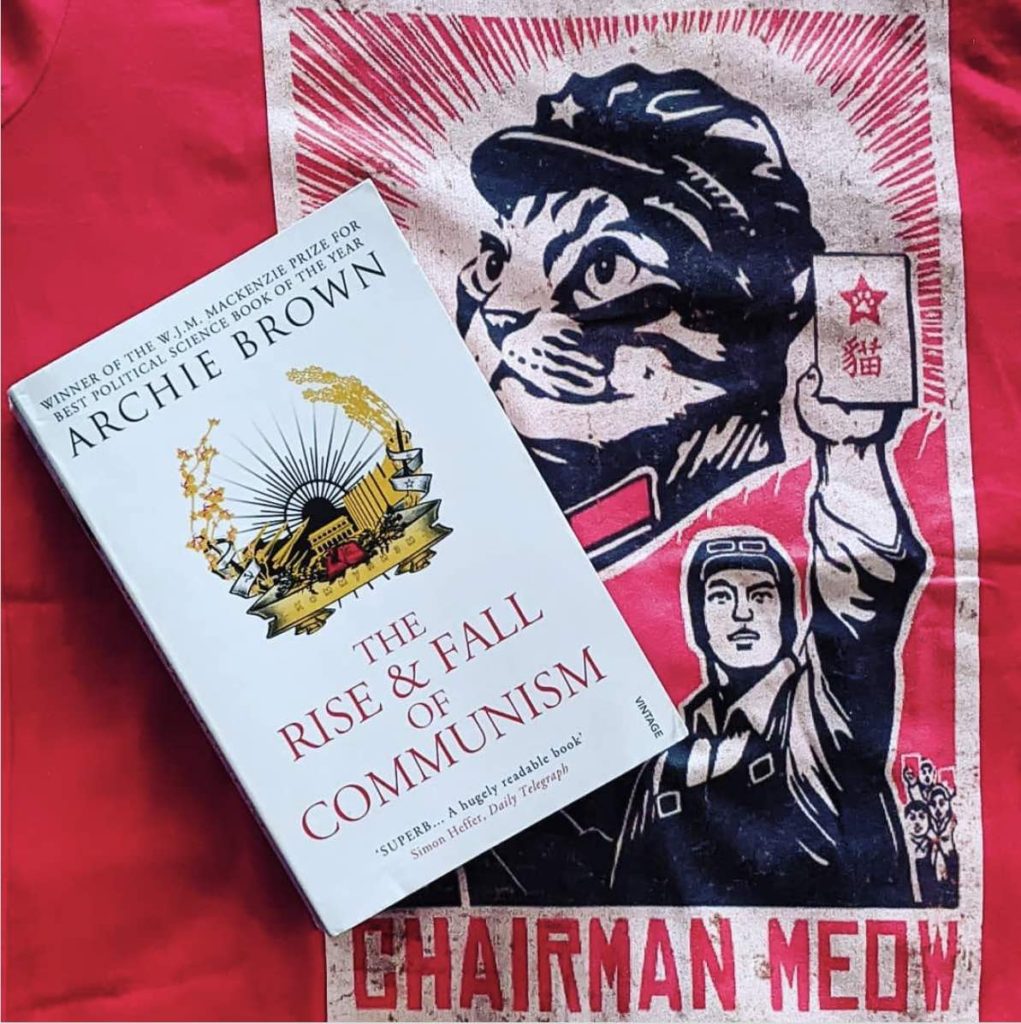Archie Brown
Geopolitics after the second world war was practically defined by the Cold War between two superpowers that were a contrast to each in terms of their world view. At a fundamental level, they differed on how the state and society should be organised. As a late 70s kid brought up in middle class India, I remember being mesmerised both by the radiant power of communist USSR and the lure of the gadgets and toys made by the capitalist US! Decades later, it is fascinating to read what was happening behind the “Iron Curtain”, and its impact on geopolitics.
Archie Brown starts from the roots of the idea of socialism and communism, even before Marx and Engels. The origins lie in medieval times, when the enemy was not the state, but organised religion in the form of the Church. Later, the French Revolution was more radical form of direct action, and Marx and Engels paid close attention to it as it was deemed an epochal event that would transform politics and society. Étienne Cabet, in 1840 is credited with using the word ‘communism’ for the first time.
The first few chapters expand on the origins, and use the early years of socialism in Russia (and the Soviet Union) and some international examples to provide a framework of what a communist system is. The monopoly of power of the Communist party, democratic centralism, the non-capitalist ownership of the means of production, the dominance of a command economy (as opposed to a market economy), the declared aim of building communism as a goal, and the existence, and a sense of belonging to, an international Communist movement were the six political, economic, and ideological foundations.
Part 2 of the book follows how the idea took over Eastern Europe around the period of World War 2, and how even among them, there were differences. In that era, while Hungary, Bulgaria, East Germany, Albania Romania, Poland, and Czechoslovakia toed the USSR line, Yugoslavia, under Tito, was an exception. The extremities that Stalin took it to is also covered in this section.
Khrushchev’ reign, and his revisionism, its impact on Eastern Europe, the rise of Castro in Cuba are documented in Part 3. This part also contains Mao Zedong’s ascendancy in China, his “Hundred Flowers” and “Cultural Revolution”, and the beginning of the ideological rift with USSR. Also notable is the Prague Spring, a prequel of what was to happen in the USSR a few decades later. Though the spread was relatively insignificant in Africa, this was also the time that Communism took roots in many East Asian countries – Laos, Cambodia, Vietnam, and Korea. As he said when he was ousted, the biggest difference that Khrushchev made was that “…they were able to get rid of me simply by voting. Stalin would have had all of them arrested.” The 18 years of Brezhnev that followed Khrushchev brought some level of political stability and overtures in foreign policy, but it was also a period of economic stagnation, and towards the end (late 70s), the technology gap with the West began to widen.
In the meanwhile, as noted in Part 4, Deng Xiaoping set about reforming China from the damage Mao had done. Under his leadership, China took an economic direction quite different from the collectivism in Russia. “Red hat”, in which private enterprise can function under the protection of state authority, led to material rewards for both. This also resulted in social changes, and much of what China is today, can be seen as the result of these reforms. In Europe, the ascendancy of Pope John Paul II, a Polish national, was a blow to the socialist credentials of the ruling party, and coupled with the influence of Czechoslovakia (the Prague Spring) from a few years ago, there was an uprising by students and workers. Though Solidarity (as it was called) had its moments, the regime managed to crush it.
The last section covers the fall of Communism, when Gorbachev ended up systematically dismantling the political, ideological and economic system that held the communist regime together. To be noted though, that splitting the USSR was definitely not his intent. But as education improved, and information began flowing freely (on a relative note) – glasnost, and his own perspective shifted from democratic centralism to social pluralism to political pluralism, the perestroika he envisioned ended up with him ceding political, military and ideological ground to his opponents within and outside the party. In the near-term, Yeltsin capitalised on it, even as Gorbachev tried his best to prevent the splintering of the USSR. Impossible not to feel for him, especially considering the blame which gets heaped on him by many. Meanwhile, Communism’s collapse in Eastern Europe can be mainly attributed to the combined effects of nationalism, and the weakening resolve of the USSR to bring in its military might.
There are pockets of Communism left in the world, and it’s interesting to note that from Cuba to N.Korea, the villain is still the US! China is a special case, as it is hardly a Communist state, at least by the definition mentioned earlier. It has forged its own path and it remains to be seen whether its economic success can counterbalance the rise of education and the spread of information (though controlled to a large extent), and thus retain the power of the centralist state machinery.
Archie Brown does a fantastic job of not just making the narrative accessible, but framing it in ways that enable the reader to understand the various contexts linked to it. It is hugely interesting to read about an alternative ideology that survived for more than five decades, but having said that, this is obviously not a book you should try if you’re not very interested in the subject.


Leave a Reply